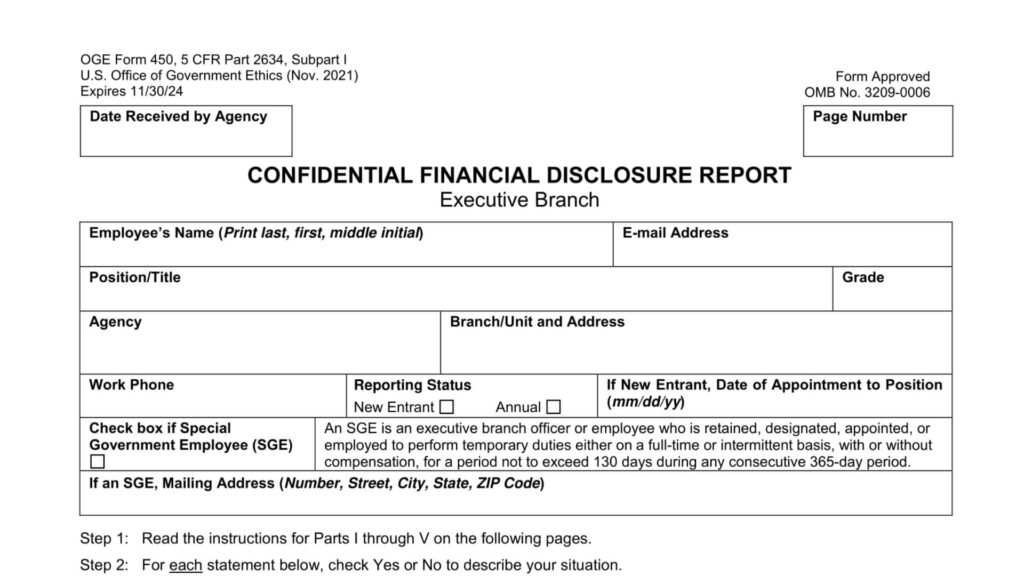What is Financial Disclosure Management? This article will discuss what this reporting requirement entails, who fills it out, and what it requires of companies. It will also explain what a company should do when the time comes to file its OGE 450. Regardless of your company’s size, you should understand the importance of Financial Disclosure Management and its regulations. Visit the official website for more details: https://www.fdm.army.mil. Disclosure management is an important function in the financial reporting process. It involves a combination of technologies and processes that enable companies to improve their internal and external communication of key financial information. It can help companies improve their data quality and compliance while reducing costs. A key driver of financial disclosure management is the need to increase transparency.
Financial executives need to stay on top of the latest regulatory changes and ensure their companies’ information is accurate. This is particularly important when it comes to narrative reporting, which is often difficult to get right. In addition, copying and pasting information is a common source of errors, and mistakes can be costly. Financial disclosure management is the process of providing accurate and timely financial information to investors and regulators. This information is critical for a stable and healthy financial market where capital allocations are optimized and regulated in line with statutory and regulatory requirements and standards.
It includes everything required to organize and maintain a company’s financial disclosure process internally. This can include ensuring that all financial statements are GAAP or IFRS compliant, XBRL tagging, and other statutory and regulatory guidelines. It also involves a corporate governance structure that ensures accountability and internal controls, audits, and processes that are optimized and timely.
Another challenge is the organization of a narrative in a financial report that requires management to explain how numbers were generated and what they mean for the business. Typically, companies use a combination of word processing tools, Excel spreadsheets, and presentation software to pull together the information they need for reports. These tools often fall short of what’s needed to deliver effective and accurate financial disclosures.
A few things can help bring order and efficiency to these processes, including developing standardized disclosure processes and collaboration between internal stakeholders. This can help to remove any kinks in the process and make it more reliable and accurate. It can also be beneficial to have a transparent two-and-fro communication channel between the company and its shareholders that allows the company to engage with them on a regular basis to understand their priorities and perspectives.
What is Oge 450 used for?

OGE 450 is the form used for reporting debt obligations issued by government entities. These debt obligations are issued to help finance their operations. Typically, the first line of supervisor must sign the form. A division or department head must sign it as well. The filter must report debt obligations for more than a thousand dollars in value each year.
O.G.E. Form 450 is a government-wide financial disclosure form required by covered employees. The form lists an employee’s assets, liabilities, and outside positions to avoid financial conflicts of interest. An employee must fill out this form before beginning a government job. Their supervisor reviews and signs the form, which is considered confidential and held in an OSJA safe. As the Ethics in Government Act dictates, certain employees must file this form.
Who fills out OGE 450?
A federal employee must file an OGE 450 (Confidential Financial Disclosure Report) when he or she is required to do so under federal law, including Executive Branch regulations and the Office of Government Ethics regulations. This form is used to collect and report financial information that can affect an individual’s ability to conduct official business without exposing the Service to a conflict of interest.
A new entrant must complete and submit the OGE 450 within 30 days of assuming a position that is covered by this requirement. This report must be filed for the preceding 12 months, or if the reporting period is shorter than that, for the entire period that is less than 12 months.
The decision to file an OGE 450 is driven from the top down and rests with the immediate “owner” or supervisor of an employee. This person could be the Director, Department Head, Division Head or other senior authority.
Each bureau ethics official or designee is responsible for timely collection of OGE 450s and for completing the review of these reports, as provided by Bureau policy. The review may be performed by the bureau ethics official or designee or by Bureau employees designated as filer reviewers, and may be completed no later than 60 days after receipt of the report.
The OGE 450 requires that each filer answer 5 yes/no questions and sign and date each page of the report. These questions should include whether the filer has any interests in a corporation, partnership, or trust. If the filer has such an interest, he or she should also describe the interest and the nature of its acquisition.
If you work in a position that is designated by your agency as requiring a financial disclosure report, you are required to file an OGE 450. This includes employees who manage contracts and grants, grant-making personnel in the Office of Justice Programs, and others with responsibilities related to where money goes.
In addition, Presidentially-appointed, confirmed by the Senate (PAS) employees; non-career Senior Executive Service (SES) employees; Senior Level (SL) employees; Professional (ST) employees; Schedule C employees; certain SGEs, and Intergovernmental Personnel Act (IPA) detailees must all file the OGE Form 450 annually after entering their positions. However, a special exception applies for those employees who leave their covered positions prior to the due date of an annual report.
You should get training each year to help ensure that you are prepared to complete your OGE 450. This can be verbal or in writing (reading training materials and informational documents), but it must be provided by a qualified instructor.
You should also consult your ethics official or counselor to ensure you understand the information you need to include in your report and how to prepare it in a way that is compliant with the regulations and your agency’s supplemental standards of conduct requirements. For example, if your agency requires you to add a broker’s statement to your OGE 450, make sure you add it in a manner that is compliant with OGE’s regulations and your agency’s supplemental standards.

What is the purpose of OGE 450?
In the United States, the Office of Government Ethics (O.G.E.) issues O.G.E. Form 450 to be filed by certain executive branch employees with outside interests. The regulations are set out in 5 C.F.R. Part 2634. The O.G.E. Form 450 filers are also required to report potential conflicts of interest.
The O.G.E. Form 450 has five questions. The person filing it may use his or her account statements for the past twelve months to determine reportable assets. Filers may also request fund managers to summarize the account statements for the last 12 months. In addition, they must identify closely held corporations, nonpublic partnerships, and similar private business ventures. Finally, they must identify U.S. government securities.
Filers of the O.G.E. Form 450 are required to submit it within 30 days of taking up a covered position. However, the filing deadline may be extended if the office of government ethics officials asks them to do so.
Army General Counsel Financial Disclosure Management
The Financial Disclosure Management (FDM) system is a paperless, automated system for military and civilian financial disclosure reporting. Its main purpose is to prevent conflicts of interest. The program is required of most political appointees and civilian career officials with payments over a certain threshold. It is a mandatory electronic filing process and is backed by a separate $3.5 million budget.
